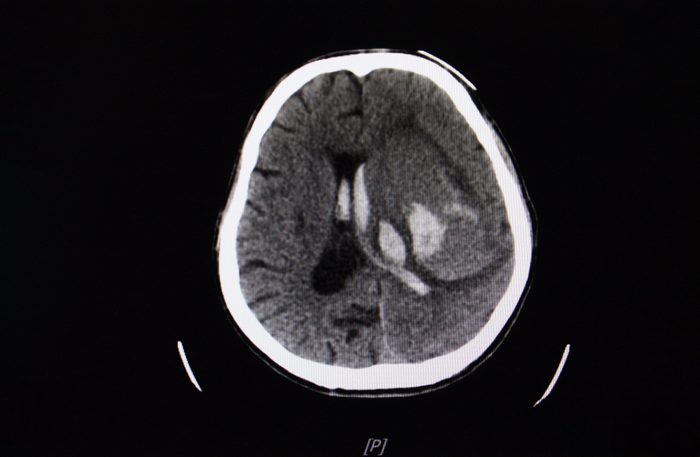
What is a brain aneurysm?
A brain aneurysm is a bulge or balloon-like pouch on a blood vessel in the brain—it actually looks a lot like a berry hanging on a stem on a brain scan image. If the aneurysm leaks or ruptures, it can cause bleeding in the brain, otherwise known as a hemorrhagic stroke, which can quickly become life-threatening and need immediate treatment. As scary as that sounds, most brain aneurysms will never rupture, cause symptoms, or create health problems.
Only about 30,000 brain aneurysms will rupture each year in the 10 to 15 million Americans with aneurysms, according to the Harvard Heart Letter. “We are born with weak spots in the arteries; this is when the inner layer pushes out from the side wall of the arteries,” says David Miller, MD, endovascular neuroradiologist at Mayo Clinic in Jacksonville, Florida. “Some people will develop aneurysms from these weak spots.” The American Association of Neurological Surgeons states that scientists have yet to uncover the exact mechanism behind why brain aneurysms emerge or grow. But they have identified some of the brain aneurysm risk factors that you can prevent, while others are out of your control.
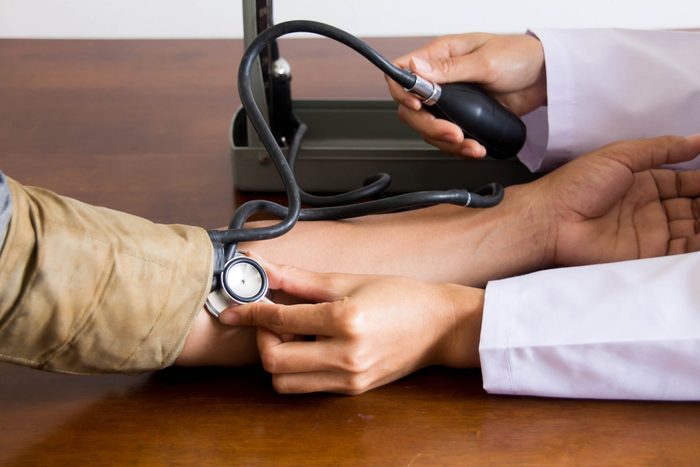
High blood pressure
Hypertension can lead to many health conditions, like heart attacks, strokes, and even brain aneurysms. “When the blood is pounding at a higher pressure onto a weak spot in the arteries, an aneurysm is more likely to develop and grow,” says Miller. “And if the aneurysm is bigger, it can bleed from the pressure changes.” High blood pressure can damage and weaken the arteries, which makes someone more susceptible to getting a brain aneurysm. In fact, an animal study from the journal Stroke found that stabilizing blood pressure levels after brain aneurysms formed helped prevent them from rupturing in mice. New guidelines from the American Heart Association recommend blood pressure to be less than 130/80. Eating a well-balanced diet that’s low in salt (less than 1500 milligrams per day) and exercising for at least 150 minutes weekly are a few ways you can manage a healthy blood pressure level.

Smoking
It’s nothing new to hear that smoking cigarettes is bad for your health. Not only can it ruin your teeth and increase your risk for lung cancer, but it can also up your risk for developing a brain aneurysm. An estimated 70 to 80 percent of people who have aneurysms are current or former smokers, Joseph P. Broderick, MD, director of the University of Cincinnati Gardner Neuroscience Institute, told sciencedaily.com. Smoking is a triple threat risk factor for brain aneurysms in all aspects, including development, rupturing, and rate of recurrence. University of Michigan researchers found nearly a threefold increase in brain aneurysm recurrence for former and current smokers at a rate of more than 25 percent. Bear in mind that all of the subjects had undergone endovascular treatment, which helps reduce blood flow to a brain aneurysm in an effort to prevent rupturing or damage from a rupture. “Nicotine in smoking causes blood vessels to constrict,” says Dr. Miller. “You can get high blood pressure from smoking, which weakens the vessels and makes your arteries weaker.”
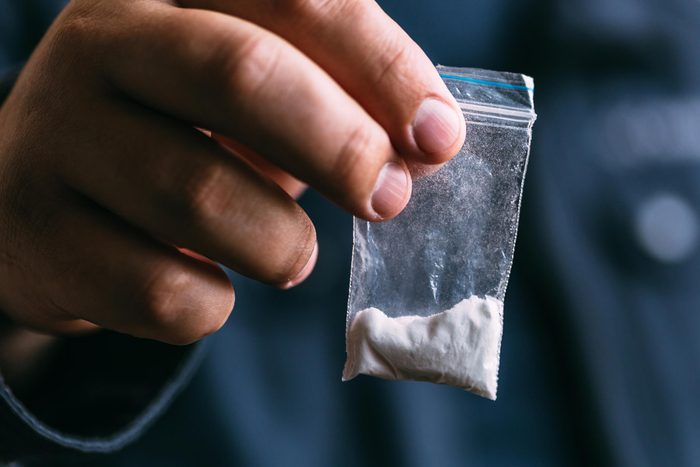
Drug abuse
Using cocaine or amphetamines are two of the biggest risk factors for a brain aneurysm because the drugs raise your blood pressure to dangerous levels. “We see aneurysm ruptures in young people and smaller ruptures in people with drug use,” says Dr. Miller. “There are lots of little malformations in the brain called venous malformations that rarely, if ever, bleed that we see in people who have done drugs because of the tremendous increase in blood pressure.” For more information on how you can treat a drug addiction, visit drugabuse.gov. You should also become aware of these 15 habits that are aging your brain.

Risks you can’t control: Your genetics
“It’s true that most aneurysms are not associated with families, partly because lots of people have them. If you look at everything, many people don’t have a family history of aneurysms,” says Dr. Miller. “But we do know that some of these people have a family member who has a brain aneurysm.” Familial aneurysms occur when an individual with a brain aneurysm has two or more first-degree relatives, like a sibling or parent, that have a brain aneurysm or suffered from a ruptured aneurysm at some point. A Familial Intracranial Aneurysm study found that nearly 20 percent of patients with a brain aneurysm reported having a first-degree relative with a brain aneurysm or a hemorrhagic stroke. If you have a family history of brain aneurysms, Dr. Miller recommends getting your brain scanned in your 20s. “Back in the day, a brain aneurysm had to bleed in order to [be found], but now we find them with an MRI,” says Dr. Miller. If there’s not a brain aneurysm in sight, there’s no need to test again until your 40s when aneurysms are more common.

Your gender
Women over the age of 55 are about 1.5 times more likely to have a brain aneurysm rupture than a man from the same age group, according to the Brain Aneurysm Foundation. But the medical world has yet to figure out why women tend to get brain aneurysms more often and far much worse than their male counterparts. A literature review from the Frontiers in Neurology looked at the gender differences in brain aneurysm location and found that women between the ages of 50 and 59 had an increase in cerebral aneurysms and more hemorrhagic strokes. This was in correlation with the fall in estrogen levels that accompanies menopausal and post-menopausal women. “I suspect there’s a little bit of an estrogen effect with the blood vessels and weakening but one really knows why,” says Dr. Miller. “There’s no evidence that shows that staying on estrogen post-menopause or not staying on estrogen has an effect on aneurysms.” As a woman, it’s best to keep an eye out for these stroke symptoms you should never ignore, too.
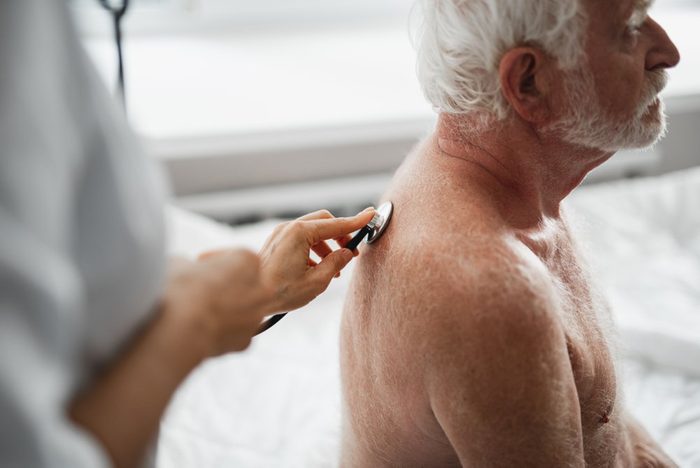
Your age
“More people who are older have aneurysms because it takes a while for these things to develop,” says Dr. Miller. “The rate of [hemorrhagic stroke] aneurysms goes up as you get older, too; it starts showing in your 40s and 50s.” There are even higher brain aneurysm growth rates in the 50+ age group—nearly 4 percent each year, according to a 2016 meta-analysis on brain aneurysm growth.
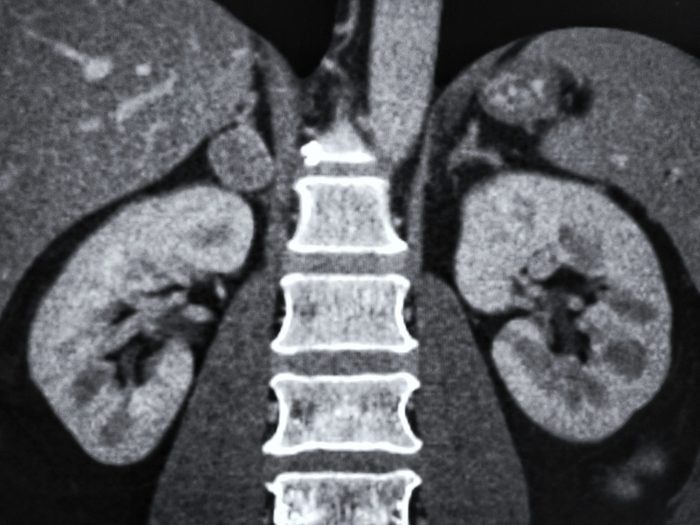
Inherited disorders
Polycystic kidney disease, a disorder where your kidney sacs are filled with fluid, can increase your blood pressure and put you at risk for developing a brain aneurysm. “Aneurysms show up a little earlier in people that have polycystic kidney disease and bleed a bit more than the usual aneurysm that you’d find in someone else,” he says. Ehlers-Danlos syndrome and Marfan’s syndrome are two connective tissue disorders in which the middle layer of the arteries doesn’t form as well, so these people have weakened artery walls. People with these disorders have all types of aneurysms that aren’t just limited to their brain but their chest and abdomen as well. If you think you’re at risk, you should also make sure you’re aware of these everyday things that can cause a stroke.
